What is Smart Working? How does it work and what are the useful tools to implement it?
Smart Working is an organizational model that intervenes in the relationship between the individual and the company. It proposes autonomy in working methods in the face of achieving results and presupposes the "intelligent" rethinking of the ways in which work activities are carried out even within company spaces, removing constraints and inadequate models linked to concepts of fixed workstations, open spaces and single offices that do not fit well with the principles of customization, flexibility and virtuality
Literally, smart working means “intelligent work”, exactly what the Prime Ministerial Decree (DPCM, ed.) urges us to follow: being intelligent, also and above all from a work perspective, means organizing ourselves to avoid gatherings and meetings with customers or other colleagues as much as possible.
However, it is always necessary to keep in mind that adopting Smart Working does not only mean working from home and using new technologies, Smart Working is not teleworking : it is also, and above all, a paradigm that involves the revision of the leadership and organization model, strengthening the concept of collaboration and encouraging the sharing of spaces. In the smart perspective, the concept of the office becomes 'open', the real work space is the one that encourages people's creativity, generates relationships that go beyond company boundaries, stimulates new ideas and therefore new business.
As Mariano Corso, Scientific Director of the Smart Working Observatory of the Politecnico di Milano, pointed out, «Smart Working cannot be the solution to “block” the pandemic but, with everyone's commitment, it can represent a measure to reduce risks, mitigate inconveniences and contain the enormous economic and social damage that this emergency risks causing. Workers, and especially those who are already Smart Workers, must return the credit of trust by demonstrating autonomy, commitment and a sense of responsibility».
Smart working often involves the coordination of multiple people on the same team, tools that must be available on PCs and smartphones and that must facilitate the sharing and modification of data in real time, something that goes beyond sending an email or writing in a WhatsApp group. Let's see together what the main communication tools and channels are.
- G Suite: all the tools that Google provides. Google Drive allows you to store any type of file or folder and make it shareable for everyone. Thanks to Docs you can create a document that can be modified in real time by multiple people and the same goes for spreadsheets, with Sheets, presentations. With Calendar you can keep an updated schedule for all members of a work group and set up conference calls on Hangout. And all this costs only the time it takes to create a Gmail.
- Trello: it is the perfect tool to organize the workflow between multiple people and if you want it can be improved by integrating it with Google Calendar and some automatic functions. Each task, for example, an article to write or a bug to eliminate, represents an open card in which you can exchange messages, insert links or documents and that can be moved into the various columns that have been created to identify the processing phases.
- Slack: A great internal messaging system for a team. You can create separate rooms for each client or project, expand individual messages into more complex discussions, and integrate everything with the other tools we've mentioned.
- Pomodoro Tracker: The so-called “pomodoro technique” is a time management method structured into 25-minute work cycles, broken up by a short break of a couple of minutes and with longer breaks every four time intervals.
- Skype: It remains a mainstay of teleconferencing and is used by many people who may not be familiar with other tools.

